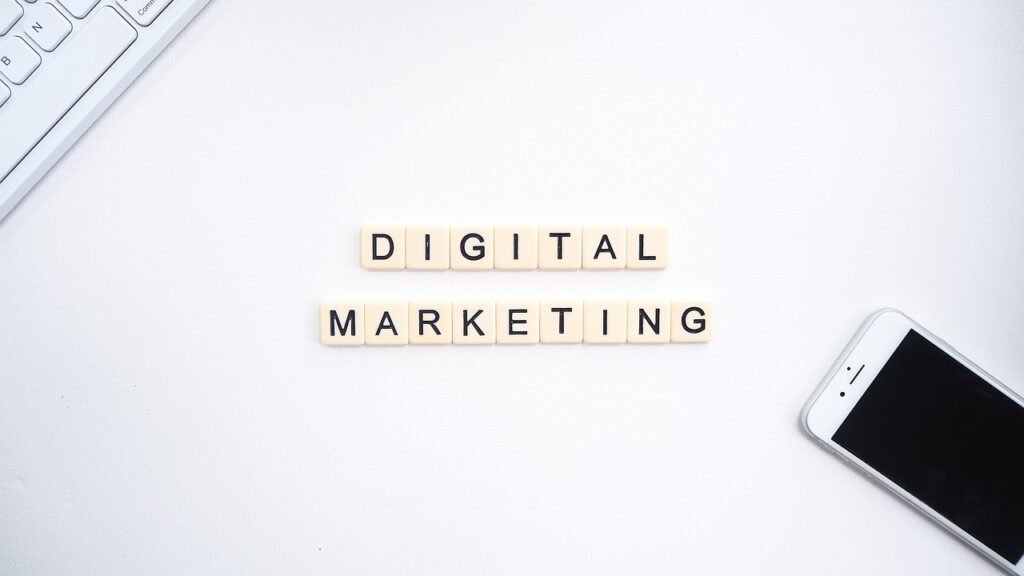Traditional Marketing Landscape
Key Components
The landscape of traditional marketing encompasses a variety of techniques designed to enhance brand visibility and establish credibility. These methods include print ads, television commercials, billboards, and direct mail campaigns. Each component plays a critical role in fostering customer awareness and trust, especially in the business-to-consumer (B2C) sector.
| Traditional Marketing Method | Description |
|---|---|
| Print Ads | Advertisements in newspapers and magazines. Known for their longevity but facing declining readership. |
| Billboards | Large outdoor advertisements positioned in high-traffic areas to capture attention. |
| Television | Commercial spots aired to a broad audience, effective for brand storytelling. |
| Direct Mail | Physical mail sent to potential customers, allowing for more personalized communication. |
Traditional marketing retains unique advantages, particularly among older demographics who may respond better to familiar media Salespanel Blog. Effective strategies leverage these components to build a comprehensive approach that promotes visibility and trust.
Importance of Integration
The effectiveness of traditional marketing strategies is heightened when integrated with digital marketing efforts. While traditional methods focus on creating brand awareness and credibility, digital marketing excels in providing detailed information that drives consumer action Forbes.
Integration allows for leveraging the strengths of both approaches. For instance, campaigns can utilize traditional media for broad reach while employing digital tools for precise targeting. This holistic approach not only maximizes reach but also allows for real-time analytics to improve efficiency.
The evolving landscape necessitates a blend of both strategies to stay relevant in a competitive marketplace. With traditional marketing channels experiencing limitations in reach, especially as print media readership declines WebandCrafts, a combined strategy enables businesses to adapt to changing consumer habits.
Exploring traditional marketing channels and understanding the advantages of traditional marketing can further enhance your understanding of how to effectively deploy these strategies in your marketing mix.
Billboard Advertising
Billboard advertising stands as a crucial pillar in the realm of traditional marketing strategies. With its extensive visibility and creative appeal, billboards can significantly impact brand recognition and consumer behavior, making them a preferred choice for many businesses.
Impact and Reach
The effectiveness of billboard advertising is largely attributed to its vast reach. Billboards can attract thousands of eyes daily, providing a solid opportunity for brand exposure. According to reports, outdoor advertising, including billboards, can influence the purchasing decisions of customers as they are often encountered during peak commuting hours (Veriflyers).
| Key Metrics | Reach |
|---|---|
| Estimated daily impressions | 30,000 – 100,000 |
| Percentage of adults noticing billboards | 70% |
| Average time spent viewing | 6 seconds |
This level of visibility emphasizes the importance of billboard placement in high-traffic areas, ensuring maximum engagement with potential customers.
Evolution of Digital Billboards
In recent years, digital billboards have revolutionized the traditional billboard medium. Providing a dynamic platform for advertisements, digital billboards allow for the display of multiple ads in a rotating format, which can enhance visibility and audience engagement. They also offer the capability to change messages or images quickly, enabling timely responses to market trends or events (BMedia Group).
The introduction of innovative campaigns, such as Specsavers’ humorous “should have gone to Specsavers” and Spotify’s “Music for Every Mood” campaign, illustrates how digital billboards can effectively capture audience attention by leveraging popular culture and witty messaging (Veriflyers).
The evolution from static to digital has not only increased the creative potential of billboard advertising but also enhanced its analytical capabilities. Advertisers can track engagement metrics more effectively, leading to optimized campaigns and better ROI. You can explore additional insights about traditional marketing methods and their integration in a digital-first world, such as through traditional vs digital marketing.
Print Media Strategy
Print media remains a powerful component of traditional marketing strategies. It offers businesses unique opportunities to target specific demographics through various platforms such as newspapers, magazines, and brochures.
Targeted Opportunities
By utilizing print media, you can effectively reach your target audience with precision. Print advertising allows for localized campaigns, enabling businesses to connect with customers in specific geographical areas. This is particularly advantageous for small businesses aiming to attract local clientele. According to BMedia Group, print media offers a rich landscape for impactful advertising, enriching visibility while fostering trust among consumers.
| Print Media Type | Target Audience | Advantages |
|---|---|---|
| Newspapers | Local community | High local engagement, immediacy |
| Magazines | Niche markets | Long shelf life, specific interests |
| Brochures | Trade shows/events | Detailed product information, tactile experience |
Integration with Digital
Integrating print media with digital strategies enhances advertising effectiveness. A coordinated approach amplifies your message across multiple platforms, capturing attention and driving engagement. For instance, including QR codes in print ads can direct readers to your website or social media for further interaction. This synergy not only broadens your reach but also allows you to measure performance using digital metrics.
Utilizing print media while blending it with digital marketing tools creates a comprehensive campaign that capitalizes on the strengths of both mediums. For more insights on how traditional methods interlink with digital marketing, explore the section on traditional vs digital marketing.
By strategically targeting audiences and integrating with digital platforms, print media not only elevates your marketing efforts but also builds credibility and trust, particularly among older demographics who may favor traditional channels. This dual approach reinforces branding and increases overall effectiveness, ensuring that your traditional marketing techniques resonate with potential customers.
Broadcast Media Essentials
Television Advertising
Television advertising remains a cornerstone of traditional marketing strategies. It offers the ability to reach millions of viewers simultaneously, making it a powerful tool for brand visibility. According to BMedia Group, coordinated campaigns that utilize television in conjunction with other media, such as radio, can reinforce marketing messages and significantly enhance brand recall.
Here’s a table that summarizes key benefits and statistics of television advertising:
| Benefit | Details |
|---|---|
| Widespread Reach | Millions of viewers across demographics |
| Engaging Content | Combines visuals and sound to capture attention |
| Brand Recall | Reinforces messages through repeated exposure |
Despite the effectiveness of television as a marketing platform, it comes with challenges. Productions can be costly, and measuring the return on investment (ROI) can be complex compared to digital media. Understanding these challenges of traditional marketing is essential before committing significant resources to television ads.
Radio Campaigns
Radio advertising is another intriguing component of broadcast media that can effectively target specific audiences. It allows for repeated messaging while being more affordable than television advertising. As one of the traditional marketing techniques, radio can create a sense of intimacy between the brand and the listeners, which is beneficial for brand loyalty.
Radio ads can be tailored to specific times of the day when target demographics are most likely to be listening, thus maximizing campaign effectiveness.
The following table outlines the advantages of radio advertising:
| Advantage | Description |
|---|---|
| Cost-Effective | Generally lower production costs compared to TV |
| Focused Targeting | Ability to reach specific demographics during peak listening times |
| Local Reach | Highly effective for local businesses looking to advertise to nearby consumers |
Overall, television and radio remain relevant forms of traditional marketing that can complement digital strategies. Balancing both mediums can increase your outreach and engagement. For more insights, consider reviewing our articles on traditional marketing examples and traditional marketing channels.
Outdoor & Transit Ads
Outdoor and transit advertising are pivotal aspects of traditional marketing strategies. They offer unique opportunities to reach a broad audience in various public spaces, making them particularly effective in promoting your brand.
Broad Audience Reach
Outdoor advertisements, beyond just billboards, are capable of effectively capturing the attention of diverse demographics. These forms of marketing can include bus stops, subways, and other transit stations, providing substantial visibility in high-traffic areas. Research shows that outdoor advertising can reach up to 80% of the population in some markets, making it a powerful tool in your marketing arsenal (BMedia Group).
| Advertising Medium | Audience Reach % |
|---|---|
| Billboards | 70-80% |
| Bus Shelter Ads | 50-60% |
| Transit Ads (Subways/Buses) | 60-70% |
This broad reach ensures that your message is seen by various segments of the population, enhancing brand recognition and reinforcing your marketing efforts.
Value of Continuous Exposure
One of the key advantages of outdoor advertising is its ability to provide continuous exposure. Unlike digital ads that can be skipped or blocked, outdoor ads reach consumers on a daily basis. Most individuals commute regularly, whether by public transport or by driving, which means your advertisements remain visible and influential.
With a well-placed outdoor advert, you can continuously engage your target audience throughout their daily routines. This constant visibility creates familiarity, which is crucial for brand recall and trust. Moreover, traditional marketing methods like outdoor ads tend to establish more credibility and trust with audiences, particularly among older demographics that may prefer tangible advertising over digital options (Salespanel Blog).
The effectiveness of outdoor ads can also be amplified by integrating other traditional marketing channels. Capitalizing on these synergistic efforts can effectively enhance your overall marketing strategy and lead to a more successful campaign. For a more comprehensive understanding of different modes of traditional marketing, consider revisiting our sections on traditional marketing methods and traditional marketing channels.
ROI in TV Advertising
Television advertising remains a powerful tool within the scope of traditional marketing strategies. Understanding the return on investment (ROI) associated with TV ads can provide you with valuable insights for crafting effective marketing plans.
Effectiveness Comparison
The average ROI for television advertising is impressive, reportedly ranging between 300 and 500 percent. This significant return makes TV ads a lucrative option for businesses willing to invest in them. For contrast, digital marketing generally offers varying ROIs depending on the specific platform and campaign execution.
| Advertising Medium | Average ROI (%) |
|---|---|
| Television | 300 – 500 |
| Digital Marketing (Average) | 100 – 300 |
This table indicates that TV advertising can provide superior returns compared to many digital methods, particularly for organizations with the financial means to effectively manage advertising campaigns. In addition, traditional marketing techniques, such as print and radio, maintain their relevance as effective means to reach wide audiences, as stated in Veriflyers.
Considerations for Small Businesses
Although television advertising offers a high ROI, small businesses may face challenges when competing for ad space due to limited budgets. Making a significant investment in TV advertising may not be feasible, which can lead to concerns about the effectiveness of their marketing endeavors.
However, traditional marketing methods can still be cost-effective. Approaches like print media and radio ads allow you to reach larger audiences at lower costs, offering potential gains without straining budgets. Additionally, traditional mediums can often be easier to track and measure compared to digital methods, aiding in your evaluations of advertising effectiveness (Faster Capital).
When considering television advertising for your business, weigh the potential ROI against your financial capacity. It is essential to evaluate other traditional marketing channels, such as traditional marketing channels, that may offer competitive returns while fitting within your budget constraints. Balancing your overall marketing strategy will ensure optimal exposure and reach without compromising your financial stability.
Direct Mail Marketing
Effectiveness Insights
Direct mail marketing continues to demonstrate significant effectiveness in today’s marketing landscape. Consumers are more likely to engage with items received via direct mail, particularly when they are nearing a purchase decision. Direct mail has proven to create a tangible connection with potential customers, leading them to consider the offerings more seriously. Research shows that the physical nature of direct mail resonates well with audiences, prompting them to take action.
| Key Insights | Impact |
|---|---|
| Higher consideration for items via direct mail | Increases likelihood of purchase |
| Tangible connection with recipients | Enhances engagement |
| Stronger response rates compared to digital methods | Improves marketing ROI |
For more information about the success of direct mail marketing, explore our insights on traditional marketing methods.
Targeting Millennials
Millennials represent a unique demographic that responds favorably to direct mail marketing efforts. Studies indicate that this generation is more inclined to act on marketing materials received through traditional mail than other age groups. This shift indicates that, despite the digital era, direct mail retains relevance among younger consumers.
| Action Probability | Millennials (%) |
|---|---|
| Likelihood to engage with direct mail | 62 |
| Preference for receiving offers via mail | 55 |
Understanding these trends is critical for businesses seeking to connect with millennials. By tailoring your direct mail campaigns to resonate with their preferences, you can harness the power of traditional marketing techniques to drive engagement and conversions. For comprehensive strategies on integrating various traditional methods, consider reviewing the traditional marketing channels.
Event Marketing Benefits
Face-to-Face Interactions
Event marketing stands as an effective traditional marketing strategy that facilitates face-to-face interactions with potential clients. This personal engagement allows marketers to showcase products or services live, which can greatly enhance brand visibility. With the ability to present offerings directly, you can create memorable experiences that resonate meaningfully with attendees (Salespanel Blog).
The direct interactions at events enable you to gather immediate feedback, understand customer needs better, and address queries on the spot. Such engagement can significantly improve the likelihood of converting prospects into loyal customers.
Networking and Referrals
Additionally, event marketing presents a unique opportunity for networking. As you connect with attendees, you can expand your business’s network and build relationships that may lead to valuable partnerships or collaborations. Those engaged and satisfied attendees are likely to refer your services or products to others, thereby creating a ripple effect that can increase your customer base (Mailchimp).
Engaging in events also builds your reputation within your industry. When potential clients and partners see your brand actively participating in relevant events, it enhances credibility and fosters trust, both vital for securing referrals.
The effectiveness of face-to-face interactions and the networking benefits derived from event marketing emphasize its value as a traditional marketing tactic. For a broader understanding of how event marketing fits into your marketing strategy, explore our resources on traditional marketing tactics and traditional marketing channels.




















